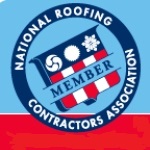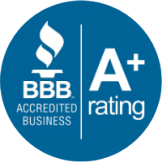Hicksville Roofing: Article About Hurricane Roof Preparation
In a home, a truss is the wooden triangular framework spanning the top of the home and providing support for the roof. Engineers and architects use many different types of trusses for various purposes, but pitched trusses are most frequently used for roofing. Roof decks are laid on top of the sides of the trusses to support roofing materials.
Question answered for our Hicksville roofing customers: If my roof is regularly maintained, do I need to perform a hurricane check?Research shows that well-maintained roofs are better at withstanding forceful hurricane winds, so checking your roof every hurricane season is not as critical as it would be if your roof was not maintained. However, hurricane wind and water damage can wreak havoc on your home, your possessions and your safety. With this in mind, it's a good idea to give your roof, rafters and trusses a quick once-over, even if your roof has regular maintenance checks.

Every so often, our mild climate is interrupted with the threat of a hurricane. For the unprepared, these events can be especially ravaging. And while it's impossible to completely hurricane-proof your home and roof, there are some things you or your roofer can do to make your home better able to weather a hurricane's high winds.
Your experienced Hicksville roofing contractor may have already ensured that your home is as ready for a hurricane as possible. Even so, it's a good idea to run through a quick check of your roofing system before hurricane season begins on June 1.
First, inspect your attic. Homes with gable roofs are the most at risk for hurricane wind damage, so it's particularly important to make sure that your gable roof's trusses are anchored and braced correctly. All of the roof structure lies atop the trusses, so securing them is the first step to ensuring a stable roof. Trusses should be braced with 2x4s and wood screws or galvanized nails, and gables should be braced in an "X" formation at the end wall. Add hurricane straps for additional strength.
Now that your trusses are secure, make sure that your roof deck is securely fastened to the trusses and rafters. Run a line of construction adhesive between the trusses and the roof deck for extra protection. Take a look around the entire roof line. If you see any light coming through, you'll need to have those areas securely patched. Look for any evidence that the roof deck's nails or screws have loosened, and seal the vents at the end of your gable roof.
Have a question regarding TPO roofing or siding repairs? Ask Long Island Roofing of Hicksville NY.
Sealing the vents prevents wind pressure from accumulating inside your home during a hurricane.
Next, head outside to examine your roof. The biggest insured losses from hurricane wind damage are caused by asphalt shingle failure, so it's important to make sure that your shingles are secured. If your roof is more than six years old, this is especially significant. In a recent study, researchers found that shingles that had been installed six or more years earlier became partially unsealed in hurricane-force winds, leaving them especially vulnerable.
Shingles on the hip and ridge joints were even more susceptible to loosening, regardless of their age. In the study, once the first loosened ridge shingle blew off, the next ridge shingle became more likely to loosen and so on. Eave and rake shingles are also at risk, especially since they often hang over the roof deck.
Since shingles throughout your roof are vulnerable to wind, make sure that they are properly attached to the roof deck. To do this, replace loose nails and apply roofing cement to shingle edges. Finally, on hip and ridge shingles, make sure that both ends are securely fastened.
Taking these precautions before hurricane season starts can provide peace of mind throughout the summer and fall, and it allows you to focus on boarding up windows and doors and gathering supplies when a hurricane is expected.









